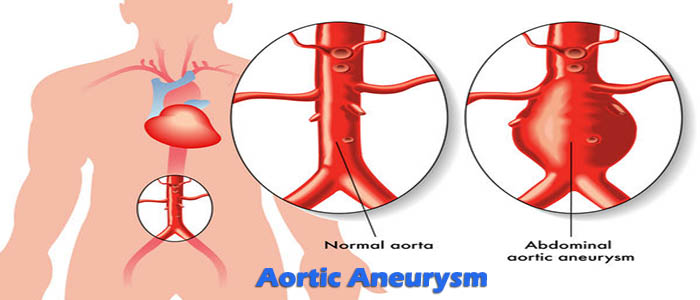Salem Vascular Surgeon
Hospital Address: |
Appointment Time: |
|
VH Speciality Hospital No.11, Dr NV Sundaram Gardens, Brindavan Road, Salem - 636004 |
Monday - Saturday Sunday - Holiday 9 AM - 7 PM |

Aortic Aneurysm - Symptoms
Abdominal aortic aneurysms often grow slowly and usually without symptoms, making them difficult to detect. Some aneurysms will never rupture. Many start small and stay small, although many expand over time. Others expand quickly. Predicting how fast an abdominal aortic aneurysm may enlarge is difficult.
As an abdominal aortic aneurysm enlarges, some people may notice:
When to see a doctor
You should see your doctor if you have any of the symptoms listed above. The recommendations below are for those who have no symptoms.
Because being male and smoking significantly increase the risk of abdominal aortic aneurysm, men ages 65 to 75 who have ever smoked cigarettes should have a screening for abdominal aortic aneurysms using abdominal ultrasound. If you are a man between ages 65 and 75 and you have never smoked, your doctor will decide on the need for an abdominal ultrasound, usually based on other risk factors, such as a family history of aneurysm. Those with a family history of aneurysm may have an ultrasound at age 60.
There isn't enough evidence to determine whether women ages 65 to 75 who have ever smoked cigarettes or have a family history of abdominal aortic aneurysm would benefit from abdominal aortic aneurysm screening. Ask your doctor if you need to have an ultrasound screening based on your risk factors. Women who have never smoked generally don't need to be screened for the condition.
Causes
Abdominal aortic aneurysm: Most aortic aneurysms occur in the part of your aorta that's in your abdomen. Although the exact cause of abdominal aortic aneurysms is unknown, a number of factors may play a role, including:
Aneurysms can develop anywhere along the aorta, but when they occur in the upper part of the aorta, in the chest, they are called thoracic aortic aneurysms. More commonly, aneurysms form in the lower part of your aorta and are called abdominal aortic aneurysms. These aneurysms may also be referred to as AAA.
Risk Factors
Complications
Tears in one or more of the layers of the wall of the aorta (aortic dissection) or a ruptured aortic aneurysm are the main complications of abdominal aortic aneurysms. A ruptured aortic aneurysm can lead to life-threatening internal bleeding. In general, the larger the aneurysm and the faster the aneurysm grows, the greater the risk of rupture.
Signs and symptoms that your aortic aneurysm has ruptured may include:
Another complication of aortic aneurysms is the risk of blood clots. Small blood clots can develop in the area of the aortic aneurysm. If a blood clot breaks loose from the inside wall of an aneurysm and blocks a blood vessel elsewhere in your body, it can cause pain or block the blood flow to the legs, toes, kidneys or abdominal organs.
Copyright © 2025 - All Rights Reserved - Salem Vascular Surgeon | Designed & Developed By Dazz IT Wing